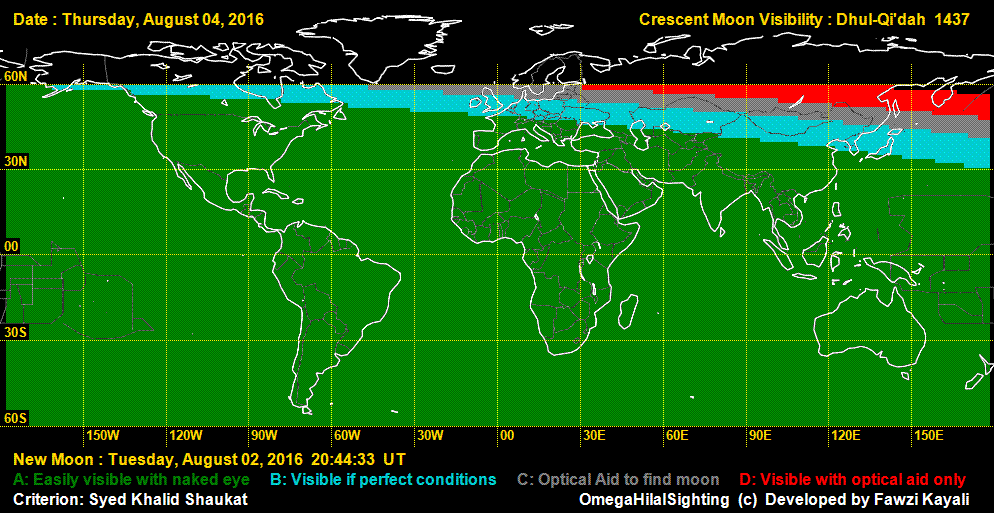Dhul-Qi’dah is the eleventh month in the Hijri Calendar. It’s one of the four sacred months in Islam during which warfare is prohibited, hence the name “Master of Truce”.
The Hijri calendar is a lunar calendar, and months begin when the first crescent of a new moon is sighted. Since the Hijri lunar calendar year is 11 to 12 days shorter than the tropical year, Dhul-Qi’dah migrates throughout the seasons.
The lunar phase or phase of the moon is the shape of the illuminated (sunlit) portion of the Moon as seen by an observer on Earth.
The lunar phases change cyclically as the Moon orbits the Earth, according to the changing positions of the Moon and Sun relative to the Earth.
The lunar terminator is the boundary between the illuminated and darkened hemispheres. Each of the four “intermediate” lunar phases is roughly seven days (~7.4 days) but this varies slightly due to the elliptical shape of the Moon’s orbit.
The eight principal and intermediate phases which take place during a Hijri month are, in sequential order: New Moon, Waxing Crescent, First Quarter, Waxing Gibbous, Full Moon, Waning Gibbous, Last Quarter, and Waning Crescent.
The Astronomical New Moon (conjunction) which means the beginning of a new Hijri month was on August 2, 2016 (Tuesday) at 20:44 UT. However, Astronomers found it impossible for moonsighting anywhere on Planet Earth.

On August 3, the moon was seen with difficulty in Africa, but not in Europe; it was easily seen only in South America; and with optical aid like binoculars/telescopes in North America.

Today, August 4, the moon can be easily seen in almost the whole world. This means that the new crescent of the new Hijri month Dhul-Qi’dah 1437 starts today in the majority of the countries of the Islamic World.

